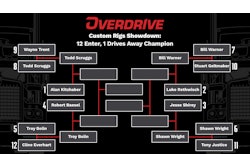By Randy Grider
Editor
[email protected]
Most fleets have raised pay more than once over the last couple of years to try to attract and retain drivers. They’ve also added other benefits and incentives.
Still, a majority of long-haul drivers are not happy with their pay, or to be more precise, the system on which their wages are based.
A recent study of 326 large U.S. trucking companies found truckers dissatisfied with incentive-based pay because they have limited control over the number of miles they drive.
In the study, more than 75 percent of drivers listed “not enough driving hours/runs scheduled,” which, the researchers said, indicates that drivers are not scheduled for enough miles to make what they consider an acceptable salary. They often feel their time is not utilized in an efficient manner.
Researcher Nina Gupta, professor of management in the Sam M. Walton College of Business at the University of Arkansas, says the rate-per-mile system used primarily by truckload carriers is an example of the piece-rate pay system, one of the oldest kinds of pay systems.
Colleague John Delery, also a professor of management at the college, says the most likely historical reason for the existence of the piece-rate system in the trucking industry is that managers cannot directly supervise drivers. Incentive-based pay became the norm for controlling and assessing performance of the drivers.

While drivers list numerous reasons in Truckers News’ annual job report survey for leaving a job – including lack of home time and poor working conditions – the pay issue is always at the top.
While the researchers call the standard pay-per-mile method not “necessarily obsolete,” they point out that less-than-truckload operations, many of which pay by the hour, have lower turnover rates.
Neither Gupta nor Delery advocates specific solutions to the problem. Alternative pay methods such as hourly or annual salary do merit consideration in addressing the turnover problem. But how do fleets that choose to move to salaries ensure driver productivity with incentive pay? First, according to the researchers, fleets have to be more selective in evaluating and hiring candidates. Then they must use tools like in-cab computers to objectively appraise driver performance and enhance their communications between dispatcher and driver.
Drivers are more likely to remain loyal and productive if they can openly communicate with their fleets and have some decision-making power concerning which loads work best for them in order to get miles they need and the home time they want. Of course, there has to be give and take on both sides in order for it to work.
In the study, Gupta says “if companies do not want to abandon the rate-per-mile system, they can carefully design and execute the system to provide consistency for the employee and reduce or eliminate abuse.”
Of course, many drivers are wary of the technology required for this proposed system, fearing it would be used only to monitor and control them. It makes the status quo look like the safer option despite drivers’ desire to see changes to increase their bottom lines and lifestyle.
The study raises some good points and hints at some recommendations for improving driver job satisfaction and easing turnover, but it falls far short of endorsing major changes. That’s because there are too many variables not taken into consideration involving economics, regulations, current infrastructure of the transportation industry and a shrinking work force.
Still, it is helpful in pointing out that pay raises alone won’t solve the turnover problem that plagues the industry.
If pay-per-mile is going to remain the majority standard for the foreseeable future, it’s time to make it more efficient for those in the driver’s seat. That starts with their input in which way to turn the wheel for the next load.









